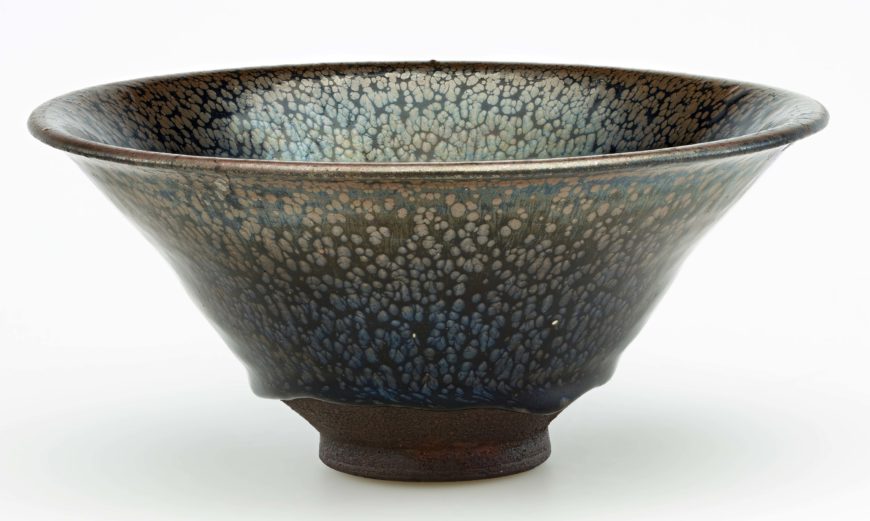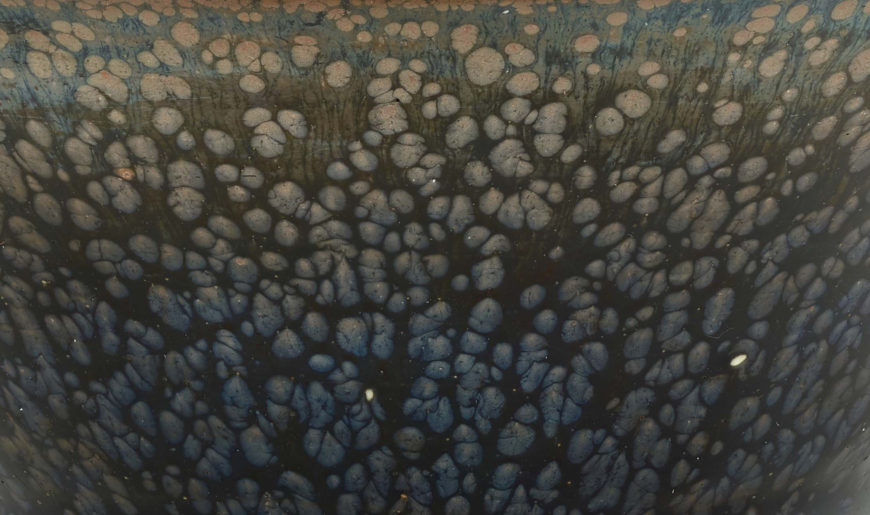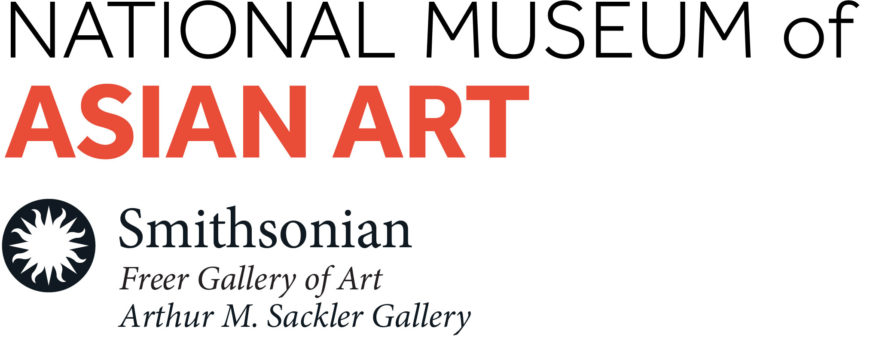
Bowl, Northern Song or Southern Song dynasty, 12th century, Jian ware, stoneware with iron-pigmented glaze, China, Fujian province, 8.8 x 19.2 cm (Freer Gallery of Art, Smithsonian Institution, Washington, DC: Gift of Charles Lang Freer, F1909.369)
This is a simply formed yet stunning tea bowl. It has a deep and flaring silhouette. Standing on a short foot ring, it rises to a wide everted mouth. The bowl is covered with a thick, lustrous, purplish-black glaze. One can imagine how the viscous glaze flowed downward when the bowl was fired in the kiln. The glaze pools unevenly above the foot with several large drops, exposing the hard, coarse-grained, dark reddish-brown stoneware body. Small round- or oval-shaped silver and coppery dots cover the bowl. A beautiful, multi-color sheen appears when light shines on the bowl. Japanese call this pattern an “oil spot” effect.

Bowl (detail), Northern Song or Southern Song dynasty, 12th century, Jian ware, stoneware with iron-pigmented glaze, China, Fujian province, 8.8 x 19.2 cm (Freer Gallery of Art, Smithsonian Institution, Washington, DC: Gift of Charles Lang Freer, F1909.369)
This tea bowl is an example of Jian ware made at the Jian kilns in Fujian province. The kilns produced tea bowls almost exclusively in the eleventh and twelfth centuries. A number of factors contributed to the rise in popularity of Jian ware bowls in the mid-Song dynasty (960–1279). The most important of these factors was the tea drinking practice. In the Song period, tea was made from finely ground tea powder. Powdered tea was placed in a bowl, which was filled with hot water and whisked to a white froth with a bamboo whisk. The foamy tea shows best against black glaze. In addition, the deep conical shape of Jian ware bowls minimized potential splashing in tea mixing, making it an ideal shape for tea preparation.
Jian ware tea bowls were highly prized in China but seem to have gone out of fashion there, whereas the Japanese adopted them for use in tea ceremonies. Japanese named the ware “temmoku,” the Japanese pronunciation of Tianmu, a mountain in northern Zhejiang province. Legend states that Japanese monks visited a Buddhist temple on the Tianmu mountain. They were attracted to the Jian bowls used by the local monks and brought back a couple to Japan. Valued dearly by Japanese tea masters, Jian, or temmoku, tea bowls have since been used in formal teas to serve honored guests.
 This resource was developed for Teaching China with the Smithsonian, made possible by the generous support of the Freeman Foundation
This resource was developed for Teaching China with the Smithsonian, made possible by the generous support of the Freeman Foundation
For the classroom
Discussion questions:
- Who do you think owned this object?
- Do you think this object was used for special occasions or for everyday use? What makes you think that?
- Based on your observations of this object, what can you infer about tea culture in Song dynasty China?

